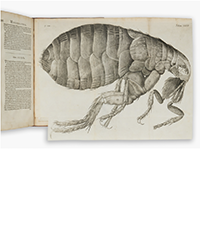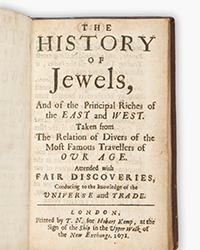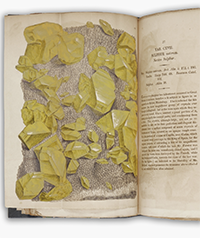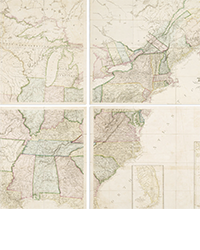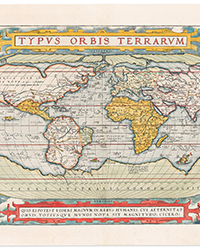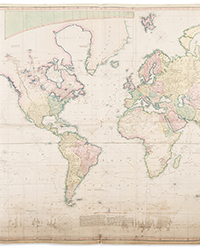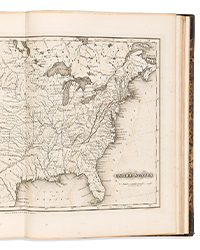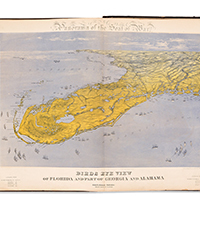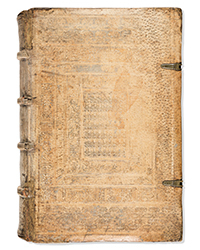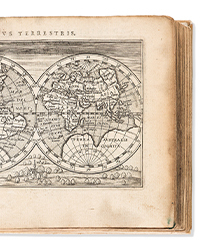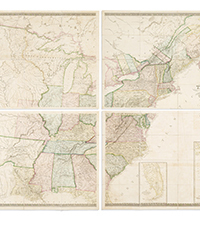Aloha RBH readers,
Take a break from the epidemic raging all around us and see life through the eyes of New England missionaries arriving in the Hawaiian Islands in the early 1820s. The citations here are from the Missionary Heralds from the years 1824 and 1825. For this article I have mostly used the modern spellings of place names and not the phonetic renditions of the early 1800s. The extracts that follow show the attitudes (and prejudices) of the first wave, dubbed the ‘Pioneers’, and also those who came a few years later, aka the ‘Reinforcements.’ All told there would be 12 companies sent out over 43 years.
On October 23,1819, the Pioneer Company of missionaries from the American Board of Commissioners for Foreign Missions (ABCFM) set sail for the Hawaiian Islands (then known as the Sandwich Islands). They first sighted land on March 30, 1820, and finally anchored at Kailua-Kona off the island of Hawaii on April 4, 1820,” according to the Hawaiian Mission Houses site. www.missionhouses.org/bicentennial
----------
April 2020 marks the 200th anniversary of the landing of American missionaries in the Hawaiian Islands, then a kingdom ruled by kings and chiefs, and best known as a refueling stop for whaling ships. Their letters (which traveled back to Boston by sea often taking months to arrive and even longer to appear in print) gave many eye-witness accounts of what they saw, did and thought.
Not only were the early missionaries great correspondents, they were teachers and preachers; they were linguists and diplomats. They were straitlaced and at the same time, many were pragmatic in adapting to difficult circumstances far from home. They represented the best and worst of their age. They set up the first presses in Hawaii, published the first readers, spellers, and chapters of the Bible. In a comparatively short time they brought nearly universal literacy to a population that previously had an entirely oral tradition and did not read or write. In addition to English and Hawaiian, a language in which they soon became fluent, most of the missionaries were also well schooled in Greek, Latin and Hebrew, if only for the purpose of faithfully translating the Gospel.
You probably already have some preconceived ideas about missionaries in general, so let’s start with some information you may not have known before, for example how they got paid:
(Oct. 1824) “The missionaries of these island have no fixed salaries, as part of their support is received from small pieces of land or small flocks of goats, a part is made of small but frequent presents from the natives, a part comes from the precarious donations of foreigners who touch at the islands, a part from private friends in America, a part from private possession of the missionaries themselves, a part from their earnings, but the main part directly from the fund of the board (ABCFM). Supplies from all these sources excepting articles which are given as tokens of personal regard are considered as common stock.”
As for their motivation, it derived from their faith: “We thank our God more warmly than ever, that of his good pleasure he excited within our bosoms the desire ‘to forsake houses and brethren and sisters and father and lands for his sake and for that of the gospel. If ignorance of the world and our own hearts do not deceive us we had rather hear the warm and constant ‘Aloha, aloha nui’ (Love to you, great love to you) of the crowds of the ignorant and degraded beings with the cheering prospect of conferring on them blessing temporal and eternal than to receive the loudest huzzas of American or European populace shouting the plaudits of a hero or a monarch.’”
The scale of the American missionary ventures in the early 19th century was truly international. Although this article focuses on Hawaii, the ABCFM also sponsored missions to many Native American tribes, as well as far flung points of the globe including Palestine, Ceylon, Syria, India and many other locations.
History has not been kind to the missionaries. In their own time they were seen as bringers of God and Civilization with a capital C. Now, two centuries later, their work is often dismissed as narrow, doctrinaire and self-serving. They are frequently portrayed as bigoted outsiders who sought to suppress (or, at the minimum, radically recast) the native culture. Many modern historians depict them as usurpers of the land and traditions.
In Hawaii their primary contribution was their belief in the power of literacy and basic education. While it is true they used literacy as a tool to proselytize their religious beliefs, the notable effect of these early efforts was that in just a few years virtually everyone in Hawaii learned to read and write, albeit this learning was heavily laced with Christian prayer, the stories of New Testament and unfamiliar religious doctrine such as observation of the sabbath.
It is hard to overstate how much they believed in their calling and to what lengths they were willing to go to spread the good news, and how oblivious they were to the beliefs of their host culture as they sought to make the Sandwich Islands an outpost of America in the mid-Pacific.
Religion
Even enroute by ship to the islands the early missionaries pursued their religious beliefs with vigor. A correspondent recalling the lengthy voyage of the ‘Reinforcements’ wrote that “services were held on deck daily” and further noted an attempt was made to “set up Bible classes for the sailors. These sessions,” he wrote “were successful, but not to a great extent.” Still 1824 finds them commenting: “We indulge some hope that few of the benighted islanders...have been touched by the finger of God and have passed from death unto life, (that our teachings are) beginning to take root and will yield abundant harvest.”
Here’s a typical comment made while passing the remains of a former alter reduced to rubble: “On the native heiau or idolatrous temple, wilst wandering over this now confused heap of stone we involuntarily shuddered at the thought that they had often been bathed in human blood, a most horrid fact. Yet we confidently hope that the stifled shrieks of a devoted human victim will never again break on the midnight silence of these groves.”
Yet despite their disapproval of much of what they encountered, they remained unfailingly optimistic about the ultimate success of their venture:
“Who after once witnessing scenes which have become familiar to us will say, the heathen cannot be enlightened? Who will assert that instruction to these is thrown away, where morning noon and night they may be be found in groups of 10 to 30 persons spelling and reading and writing and whether in their houses or in the grove, whether strolling on the beach or I might almost add sporting in the surf making their books and slate their inseparable companions …. They can be civilized, they can be made to partake with millions of their fellow beings in all the advantages of letters and the arts”….“Nor is there more doubt that they can be Christianized. They eagerly seek religious instruction and prayers and morning and evenings with seriousness and solemnity surround the altar of the great I AM.”
In this regard, and in their belief that their new knowledge was better than the old, they were relentless and undeviating:
“Mr. Ellis preached a sermon on the subject of the eternal destiny of their ancestors and former heathen friends…. questioned whether they could possibly be in a state of happiness since he died in the cause of false gods and also inquired whether the greater guilt of having worshipped idols was theirs or that of their parents who instructed them to do it? All agreed however saying that now they had perceived the true light if they did not walk in it their guilt would be much more aggravated than that of their forefathers who had lived and died in heathen darkness.”
However, the introduction of Christian values, such as abstaining from work on the Sabbath was not always well understood and produced many instances of confusion and evasion.
One Sunday a missionary came across a man working in his field. Asked if he did not know that it was forbidden to work on the Sabbath? he replied he knew, “but I am working secretly and Kalanimoku (a chief who was sympathetic to the missionaries) will not find out.”
“But God will see,” responded the minister. “Well,” answered the man, “he will not be angry with me to water one bed more and then I will stop.”
The missionaries found it difficult to understand that their future converts had no conception of what to them were basic spiritual ideas, and further they were dismayed to find it would be difficult to express these ideas using the Hawaiian language.
“A considerable number of the words must doubtless be introduced from the Greek into the Owhyhean version as there are many terms and any ideas for which there is nothing in this language to answer. Even the most common terms such as ‘faith, holiness, throne, dominion, angel, demoniac,’which so frequently occur in the New Testament cannot be expressed with precision by any terms in the Owhyean language. The natives call an angel either an akua(a god) or a kanaka lele(flying man)”
The missionary correspondents are by turns oblivious and self congratulatory. Here one writes from Lahaina in remarks published in Jan 1824 describing a scene “where natives at study (are) clothed in loose dresses made in European fashion… presented a strong contrast to the appearance they made but a year or two since when seen only in unblushing nakedness, and when they knew no higher subjects of thought or occupation than to eat, drink and be merry.”
And here is Asa Thurston, a member of the First Company, writing from the Big Island proclaiming to the board in Boston: “Thus my dear sir I have given you an imperfect sketch of my situation, prospects and encouragements. On this important long neglected island two stands of the cross are now erected and through its borders the Gospel trumpet has been blown. With my associates I travelled and searched out the land. These eyes beheld the miseries of the people. Full 75,000 (on the Big Island) are sunk in all the pollution of sin and groping their way through life in all the darkness of nature. As we passed from place to place thousands listened to words of salvation.”
ALOHA
It is interesting to note while the missionaries constantly decried the heathen, pagan, idolatrous nature of their new friends they were equally impressed with the expressions of hospitality that greeted them everywhere:
A letter written in 1823 and published in 1824 observed: The ‘Reinforcements’ were greeted by Kaahumanu (a high ranking chieftess/queen), who said, “We bid you welcome to our islands our hearts are glad you come - very glad. Give our alohato all the new teachers and their wahine (literally women, in this use meaning wives). And again a little farther on: “From them we almost every day receive a few fish, a few potatoes or some article of provision, which though not very valuable in themselves are still convincing evidence of their friendship.”
PRINTING - LITERACY - BOOKS OF INSTRUCTION
The teaching and literacy efforts of the missionaries were greatly aided by the books and printed sheets of all kinds which issued from their press:
In 1824 it was observed: “We have now the pleasing prospect of putting to press within a few days an edition of twenty hymns in the native language prepared principally by Mr. Ellis, which many hundreds of the natives will be able and glad to read as soon as can be put into their hands. … Within two years we hope to … print 20,000 copies of one of the Gospels. This may not indeed be accomplished in two years but we wish by the end of that period to have the means in our possession.”
That same year, “Many of the people who beg for books we are obliged to deny, about 70 have applied during the last three days and we have given out about two copies to each of five people.”
Writing from Honolulu one correspondent proudly mentioned: “Mr. B having begun a translation of the Gospel of Matthew which is hoped will be finished in the course of a year, completed the first chapter today, having spent some portion of each day for the last three weeks comparing the Latin, English and Tahitian version with the original Greek and endeavoring to produce from the original version in the Owhyhean language as clear and correct as the genius of the language and our acquaintance with it will admit.”
A letter from Honolulu by Bingham proclaims: “The Hawaiian Hymn Book, consisting of 60 pages and contains 47 Songs to Jehovah, the true God, has been copied and an edition of 2,000 copies published
Equally ambitious is the description of the first school books: “... 2,000 copies of the elementary lessons for schools (were published.) It contains alphabet, Arabic and Roman numbers, exercises in spelling from mono-syllable words to ten syllables, (and) exercises in reading.” ….
“Numerous applications have been made for books of which nearly 200 have been given out” ...
“Applications are daily made by members of the natives for copies of the spelling book which an edition was printed some time since. Nearly 2,500 copies have been distributed. Another edition will be printed speedily.”
HAWAIIAN Language
The missionaries mostly proved to be accomplished linguists, who were confident of their abilities. “It may not be readily understood how we can teach in a tongue of which we are almost entirely ignorant. The rudiments of this language are so simple that after once learning the sound of the letters and diphthongs, there is not the least difficulty in pronouncing any word correctly or in mechanically reading any sentence. So that we are fully competent to instruct them in spelling and reading of the few sheets already in print.”
Many words which were common at that time including hu-hufor angry, alohaas a greeting and an expression of love, makefor dead, wahinefor woman and many others are still in frequent use today.
LAHAINA, Maui
The missionaries wrote letters from many parts of the islands, none more frequently than Lahaina on Maui. Here’s a letter sent from Lahaina, Maui dated Aug. 1823 published in 1824 which began, “This may be the earliest notice you will have of our establishment at this place ….. We set up residence with our families on May 31.” It goes on to give details of their new homes.
“We are living in houses built by the heathen and presented to us. They are built in native style and consist of post driven into the ground on which small poles are tied horizontally and then long grass is fastened to the poles by strings which pass round each bundle. We have no floor, and no windows, except holes cut through the thatching which are closed by shutters without glass.
For the natives it is observed, “They make little use of these dwellings except to protect their food and clothing and to sleep in during wet and cool weather. Most generally they eat, sleep and live in the open air and the shade of a koa or breadfruit tree.
“Our houses are comfortable at this season and we hope will remain during most of the year as very little rain falls at this place. But situated as we are and we are all contented and happy, our work is indeed a pleasant one” …. “I can see clearly that the finger of Providence pointed me to these islands, (with) some prospect of success and lasting usefulness. Many are waiting to receive instruction and waiting, may I say, with high hopes.”
Or here, in a later letter, is another first impression of Lahaina (then the capital of the Hawaiian Kingdom and residence of kings and chiefs):
“After a very rough but splendid night we found ourselves at sunrise this morning in distinct view of the wild mounts that overhang the district of Lahaina, and were advancing rapidly to the anchorage. The settlement appeared far more beautiful than any place we have yet seen on the islands, indeed it is the only one that, in our judgement, has any claim to that epithet. The whole district stretching nearly three miles along the sea side is covered with luxuriant groves, not only of cocoa-nut (the only tree we had before seen, except on the tops of the mountains) but also of bread fruit and the koa, one of the handsomest of ornamental trees. The banana and tapa trees and sugar cane, seemed most abundant and flourishing and extended almost to the beach on which a fine surf constantly rolls.”
After meeting with a native prime minister they were conducted to his quarters where they observed: “The thick shade of the bread fruit trees which surround his cottages, the rustling of the breeze through the banana and sugar cane, the murmurs of the mountains streams which encircle his yard and the coolness and verdure of everything around us seemed in contrast with our situation during a six months voyage and four weeks residence on the dreary plain of Honolulu, like the delights of an Eden and caused our hearts to beat warmly with gratitude.”
The setting sun in Lahaina brought forth a lyric description: “The west is filled with rich and brilliant tints the reflects of which give a softened beauty to the rugged heights of Lanai and Molokai, while at the same time cover the bolder mountains of Maui with purple and line the crimson clouds that hang over them with the deepest shades of amber and gold. Every object was so uncommonly lovely that on our way to evening prayers we involuntarily stopt to give utterance to the emotions of admiration we felt at the beauty and serenity of the land and ocean and sky.”
But, once outside of the home of a high ranking official, the tone is less complimentary: “Every part of the island seen from Lahaina wears the same forbidding and desolate aspect and ... the eye is met only by a barren sand beach occasionally interrupted by heaps of dark coral made gloomy by the wild dashing of a heavy surf.”
Their impression Maui as a whole is recorded as: “Instead of being the sunny and Elysian fields, which the imagination of many make them, they in fact, are only vast heaps of rocks in the midst of this mighty ocean and here and there, at long intervals, a rich and luxuriant valley or plain thronged with inhabitants.”
HOW IT’S DONE BACK HOME
Like so many contemporary visitors to the islands, a recurring theme in the missionary letters is the comparison of what they are seeing to how those things were done back home. Here are just a few of those observations:
(1825) Writing on the abundant provisions provided by the Queen Keopuolani… “In fact no Christian congregation in America could in this respect have received a clergyman, coming to administer the word of life to them, with greater hospitality or stronger expression of love and good will.”
Disparaging the landscape outside the royal compound in Lahaina: “The taste, skill and industry of an American gardener might convert it into an earthly paradise but now it every where appears only like the neglected grounds of a decayed and deserted plantation. There is no uniformity or neatness to be seen and almost everything seems to be growing in the wildness of nature.”
Or this 1825 snippet commenting on the scenery in general: “But to an eye accustomed to the varied beauties of an American landscape, to its widely cultivated fields, its stately groves, its spreading lawns and broadly gleaming rivers, its gardens and enclosures, its farm houses, county seat, villages, domes and spires, a more melancholy place of exile could scarce be selected than the Sandwich islands.
COLLECTING TAXES
The missionaries had a keen eye for status, class distinction and how the ruling chiefs raised money to support what, even then, was a lavish lifestyle. Here are two excerpts that remark on taxation of the populace for the benefit of the royals.
This letter written in 1823 and published in 1824 comments on the “King’s excesses.”
“The king now established in a large new house which has been four months in building, lays a tax on the nation for dollars. The larger chiefs pay from $40 to $60, smaller chiefs $10, some of the foreigners and even merchants from $5 to $20. The king’s servants about his person, even his cook and his little pipe-lighters pay $2, the tax will amount to $5,000 at least.
“The tax is a national custom, nor is it the exclusive privilege of the king. His mother lately built a house and collected of those that entered it about $800. A house built in the fort before our arrival is said to have collected $2,000.”
A letter published in 1825 from Lahaina describes “the presentation to the king of tax levied on a district on the windward side of the island. It consisted of a procession of not less than 150 persons led by the head man; they were all neatly dressed in new tapa and walked in single file the first 20 men bearing each a baked pig or dog neatly and ingeniously wrapped in and ornamented with green leaves. They were followed by fifty others bearing 30 immense calabashes of poi, 20 of which were suspended each on a long pole and carried by two men and 10 others on the shoulders of the same number of men. Then came females to the number of 70 or 80 each bearing on her shoulder a large package of tapa or native cloth. The whole was deposited in front of the royal tent and the company with hundreds who followed them seated themselves in a circle at a respectful distance apparently with the expectation that the king would present himself.
“In the course of a half an hour he (the king) left his tent and paced the large mat in front of it for 15 or 20 minutes. He appeared with dignity and we could not but remark the similarity of his air and whole appearance to that of persons of high rank in our own country, whom we have seen exhibit themselves in the same manner, to gratify the curiosity of the populace. He took not the least notice of the throng and conversed with us if there had been no persons present but ourselves.”
LIFE, DEATH, MARRIAGE OF ROYALS
During the first years in the islands the missionaries were in close touch with the high chiefs, including Kamehameha II (Liholiho) who made a royal voyage to England and died on the return trip.
A letter published in May 1824 stated: “The late king’s death has occupied the attention of the people. Several splendid processions paraded through the village and songs and shouts of the multitude reach even to the mission house. Some of the queens’ dresses consisted of sixty or seventy yards of silk and cloth, part of which was borne up by their attendants. The king and suite paraded on horseback. Kamamalu (was) dressed in an ancient mode rode high above the heads of the multitude upon a large new whale boat lashed firmly on a rack of poles 30 feet in length by 20 feet in breadth borne on the shoulders of 70 or 80 men. The boat was overspread with imported cloth then loaded with a large quantity of native tapa.”
“In these exhibitions and on other occasions among the people there is a most singular combination of the grand with the ludicrous, the beautiful with the ugly, the admirable with the disgusting, order with confusion, splendor with debasement such as could scarcely be found in any other part of the world.”
Liholiho was not the only royal to die in these early years. Keopuolani, the king's mother, died in the Fall of 1823. Her passing was the occasion of a large public funeral the first to be performed in a Christian manner. Her death also prepared the way for Christian marriage.
“Whenever the wife of a chief died … and her remains were out of sight, he made no delay in taking another. It was not a week after the funeral of Keopuolani that there was a very general agitation respecting a second wife for Koapini. There were no less than five candidates all of whom were constantly watching around him. But he soon made known his determination to wait for a time and then selecting one for himself and inquired if it would not be proper for him to be married like the people in America. We told him it would. Accordingly in less than a month, he selected Kalikua, a widow of the late Tamaha-maha and mother of the king’s two favorite wives. The ceremony was performed 18th of October 1823. However short the time may appear to Americans, it was nevertheless longer than it is probably any other chief ever waited marriage.”
STRONG DRINK, VICE, SIN, INTEMPERANCE, THE SAILORS
The missionaries took pains to discourage dissipation and sin. “Ellis and Bingham earnestly recommended “the abandonment of prevailing vices and diligent attention to instruction and the duties of Chrstianity. They took occasion to discountenance the wasting of time by idleness and sport, the practice of gaming for money which is but too common, though very much less than a year ago, and the abuse of the institution of marriage as well as the violations of the sabbath.”
In 1824 Thurston made a visit to a Big Island distillery, where he observed disapprovingly: “The native make considerable quantities of intoxicating liquor from an exceeding saccharine root which is baked pounded fermented and distilled as a substitute for rum.”
Strong drink and ensuing inebriation was their mortal enemy. After finding the king drunk on the ground in Lahaina they noted the reaction of his mother: “Keopuolani lifted up her hand and pointed to the scene of intemperance and debauchery exclaimedpupuka(shameful shameful) and throwing herself backward with a convulsive sob hid her face and her tears in a package of tapa.”
They also gave distinctly mixed reviews to the mariners on the vessels that populated island harbors: “We were visited by the masters of the whale ships. The pleasant interview which we had with them led us to mourn more deeply and more sincerely over the depravity of others, whose baneful influence is felt at every missionary station on the island. We desire to mention with gratitude however that a great proportion of the masters of vessels who have visited us in Lahaina have treated us not only with attention and respect, but with particular kindness. If they could get the sailors aboard … then will missionary labor be comparatively easy and its progress rapid.”
They also were often the victims of theft, and after complaining to the higher authorities noted, “not one chief would come out against it …. (There is) a great unwillingness to take the part of the foreigner against one of their own people.”
The custom of praying to death by sorcery.
Despite their best efforts, many of the earlier customs persisted. “There is no superstition perhaps more general and deep rooted in the minds of this people than the belief that certain persons have the power by prayer and incantations to destroy the lives of others and many doubtless have become victims in their credence of this device of darkness. A person who has fallen under the displeasure of one of these kanaka anana(praying men) is told that his power is exercised over him and that he will die. He himself believes in the efficacy of that power, … his mind becomes filled with pictures of death; he cannot sleep his spirits sink; his appetite fails…. (He) languishes and dies beneath the influences of his own ignorance and superstition. The less enlightened of the people think no one dies a natural death and resolve every instance of mortality into the effects of this pule anana(death prayer)
SOME THINGS NEVER CHANGE
Then as now, it was expensive to live in Hawaii. Writing about the cost Mr. Chamberlain observed, “I regret the necessity of drawing so frently on the board, particularly on the account of the very high price of everything of the nature of supplies and the great difference of exchange.”
“The occasion of the high prices of provision at the Sandwich Islands is the great resort of ships for the purpose of obtaining refreshments after long voyages. A few years ago it was easy to purchase large hogs for one or two axes each, but latterly the same animals have been dearer at the islands, than anywhere in the United States.”



![<b>Scandinavian Art & Rare Books Auctions, Dec. 4:</b> ROALD AMUNDSEN: «Sydpolen» [ The South Pole] 1912. First edition in jackets and publisher's slip case. <b>Scandinavian Art & Rare Books Auctions, Dec. 4:</b> ROALD AMUNDSEN: «Sydpolen» [ The South Pole] 1912. First edition in jackets and publisher's slip case.](https://ae-files.s3.amazonaws.com/AdvertisementPhotos/0a99416d-9c0f-4fa3-afdd-7532ca8a2b2c.jpg)
![<b>Scandinavian Art & Rare Books Auctions, Dec. 4:</b> AMUNDSEN & NANSEN: «Fram over Polhavet» [Farthest North] 1897. AMUNDSEN's COPY! <b>Scandinavian Art & Rare Books Auctions, Dec. 4:</b> AMUNDSEN & NANSEN: «Fram over Polhavet» [Farthest North] 1897. AMUNDSEN's COPY!](https://ae-files.s3.amazonaws.com/AdvertisementPhotos/a077b4a5-0477-4c47-9847-0158cf045843.jpg)
![<b>Scandinavian Art & Rare Books Auctions, Dec. 4:</b> ERNEST SHACKLETON [ed.]: «Aurora Australis» 1908. First edition. The NORWAY COPY. <b>Scandinavian Art & Rare Books Auctions, Dec. 4:</b> ERNEST SHACKLETON [ed.]: «Aurora Australis» 1908. First edition. The NORWAY COPY.](https://ae-files.s3.amazonaws.com/AdvertisementPhotos/6363a735-e622-4d0a-852e-07cef58eccbe.jpg)
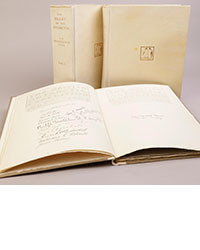
![<b>Scandinavian Art & Rare Books Auctions, Dec. 4:</b> SHACKLETON, BERNACCHI, CHERRY-GARRARD [ed.]: «The South Polar Times» I-III, 1902-1911. <b>Scandinavian Art & Rare Books Auctions, Dec. 4:</b> SHACKLETON, BERNACCHI, CHERRY-GARRARD [ed.]: «The South Polar Times» I-III, 1902-1911.](https://ae-files.s3.amazonaws.com/AdvertisementPhotos/3ee16d5b-a2ec-4c03-aeb6-aa3fcfec3a5e.jpg)
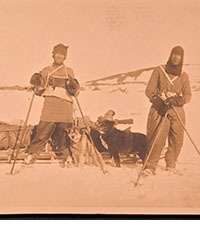
![<b>Scandinavian Art & Rare Books Auctions, Dec. 4:</b> [WILLEM BARENTSZ & HENRY HUDSON] - SAEGHMAN: «Verhael van de vier eerste schip-vaerden […]», 1663. <b>Scandinavian Art & Rare Books Auctions, Dec. 4:</b> [WILLEM BARENTSZ & HENRY HUDSON] - SAEGHMAN: «Verhael van de vier eerste schip-vaerden […]», 1663.](https://ae-files.s3.amazonaws.com/AdvertisementPhotos/d5f50485-7faa-423f-af0c-803b964dd2ba.jpg)
![<b>Scandinavian Art & Rare Books Auctions, Dec. 4:</b> TERRA NOVA EXPEDITION | LIEUTENANT HENRY ROBERTSON BOWERS: «At the South Pole.», Gelatin Silver Print. [10¾ x 15in. (27.2 x 38.1cm.) ]. <b>Scandinavian Art & Rare Books Auctions, Dec. 4:</b> TERRA NOVA EXPEDITION | LIEUTENANT HENRY ROBERTSON BOWERS: «At the South Pole.», Gelatin Silver Print. [10¾ x 15in. (27.2 x 38.1cm.) ].](https://ae-files.s3.amazonaws.com/AdvertisementPhotos/fb024365-7d7a-4510-9859-9d26b5c266cf.jpg)
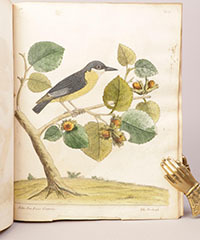
![<b>Scandinavian Art & Rare Books Auctions, Dec. 4:</b> PAUL GAIMARD: «Voyage de la Commision scientific du Nord, en Scandinavie, […]», c. 1842-46. ONLY HAND COLOURED COPY KNOWN WITH TWO ORIGINAL PAINTINGS BY BIARD. <b>Scandinavian Art & Rare Books Auctions, Dec. 4:</b> PAUL GAIMARD: «Voyage de la Commision scientific du Nord, en Scandinavie, […]», c. 1842-46. ONLY HAND COLOURED COPY KNOWN WITH TWO ORIGINAL PAINTINGS BY BIARD.](https://ae-files.s3.amazonaws.com/AdvertisementPhotos/a7c0eda0-9d8b-43ac-a504-58923308d5a4.jpg)
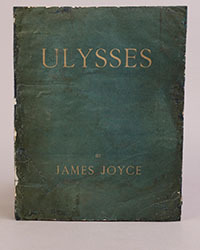

![<b>Sotheby’s, Dec. 11:</b> Darwin and Wallace. On the Tendency of Species to form Varieties..., [in:] <i>Journal of the Proceedings of the Linnean Society,</i> Vol. III, No. 9., 1858, Darwin announces the theory of natural selection. £100,000 to £150,000. <b>Sotheby’s, Dec. 11:</b> Darwin and Wallace. On the Tendency of Species to form Varieties..., [in:] <i>Journal of the Proceedings of the Linnean Society,</i> Vol. III, No. 9., 1858, Darwin announces the theory of natural selection. £100,000 to £150,000.](https://ae-files.s3.amazonaws.com/AdvertisementPhotos/00d5fd41-2542-4a80-b119-4886d4b9925f.png)


